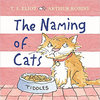New, Quality Books - 50-90% off, over 2500 titles
Your basket is empty.
Categories Lucky Dip Clearance BARNSLEY IN THE GREAT WAR
Categories Lucky Dip Clearance DURHAM CITY IN THE GREAT WAR
Categories Last Chance to buy! LEEDS AT WAR 1939-45
Categories Last Chance to buy! SEA & AIR FIGHTING: Those Who Were There
Categories Last Chance to buy! SKETCHBOOK WAR: Saving the Nation's Artists
Categories Last Chance to buy! STRUGGLE AND SUFFRAGE IN PLYMOUTH
Categories Last Chance to buy! BENEATH TROUBLED SKIES: Poems of Scotland at War 1914-1918
Categories Last Chance to buy! LAST SURVIVOR
Categories Last Chance to buy! SAS GREAT ESCAPES
Categories Last Chance to buy! CITY OF LONDON AT WAR 1939-45
BARNSLEY IN THE GREAT WAR
Book number: 92154
Product format: Paperback
In stock
£4.00
Customers who bought this product also bought
|
|
|
|
|
|
|
Browse these categories as well: Lucky Dip Clearance, War & Militaria, Great Britain, Maps & the Environment, War Memoirs
DURHAM CITY IN THE GREAT WAR
Book number: 92157
Product format: Paperback
In stock
£3.00
Customers who bought this product also bought
|
|
|
|
|
|
|
|
Browse these categories as well: Lucky Dip Clearance, War & Militaria, Great Britain, Maps & the Environment, War Memoirs
LEEDS AT WAR 1939-45
Book number: 92164
Product format: Paperback
In stock
£4.50
Customers who bought this product also bought
|
|
|
|
|
|
|
|
Browse these categories as well: Last Chance to buy!, Great Britain, Maps & the Environment, War Memoirs, War & Militaria
SEA & AIR FIGHTING: Those Who Were There
Book number: 92168
Product format: Paperback
In stock
£3.50
Customers who bought this product also bought
|
|
|
|
|
|
|
|
Browse these categories as well: Last Chance to buy!, War & Militaria, Transport, War Memoirs
SKETCHBOOK WAR: Saving the Nation's Artists
Book number: 92169
Product format: Paperback
In stock
£6.00
Customers who bought this product also bought
|
|
|
|
|
|
|
|
Browse these categories as well: Last Chance to buy!, War & Militaria, War Memoirs, Art & Architecture
STRUGGLE AND SUFFRAGE IN PLYMOUTH
Book number: 92170
Product format: Paperback
In stock
£4.00
Customers who bought this product also bought
|
|
|
|
|
|
|
|
Browse these categories as well: Last Chance to buy!, War & Militaria, Modern History/Current Affairs, Feminism, War Memoirs
BENEATH TROUBLED SKIES: Poems of Scotland at War 1914-1918
Book number: 92198
Product format: Hardback
In stock
£4.50
Customers who bought this product also bought
|
|
|
|
|
|
|
|
Browse these categories as well: Last Chance to buy!, War Memoirs, Literature & Classics, Scottish Books
Customers who bought this product also bought
|
|
|
|
|
|
|
|
Browse these categories as well: Last Chance to buy!, War & Militaria, War Memoirs
Customers who bought this product also bought
|
|
|
|
|
|
|
|
Browse these categories as well: Last Chance to buy!, War Memoirs, War & Militaria
CITY OF LONDON AT WAR 1939-45
Book number: 92258
Product format: Paperback
In stock
£6.50
Customers who bought this product also bought
|
|
|
|
|
|
|
|
Browse these categories as well: Last Chance to buy!, War Memoirs, Great Britain, Maps & the Environment, War & Militaria




































































